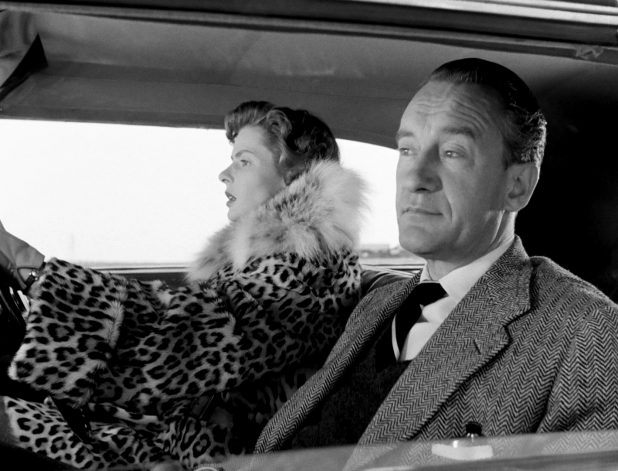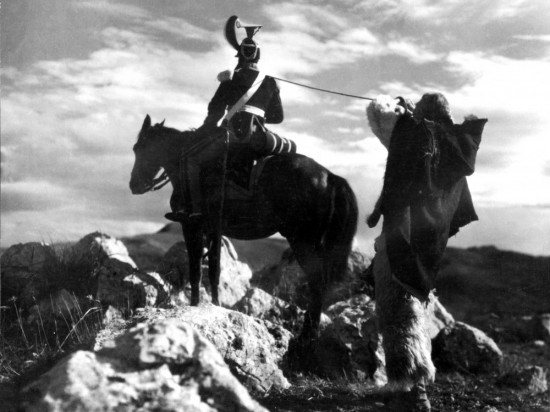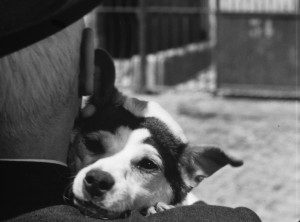
The Italian Neo-Realist movement kicked off just after the Second World War and brought together a group of Italian filmmakers who focused their ideas on stories set amongst the poor and the working class reflecting the austerity of the era and government cut-backs. Frequently using non-professional actors or children, or professionals playing strongly against their normal character types, the films were set in a background populated by local people brought in for the films.
NEO-REALISM rejected the strict guidelines that had been imposed during the war years by Benito Mussolini’s ‘White Telephone’ films that toed the party line and, instead, explored themes of economic hardship, oppression and social injustice in everyday life, particularly amongst the working classes. These had been brought about by the devastation of the war years and changes in the nation’s psyche after the war which caused fractures in film industry financing and actual physical damage to some film studios and equipment. Not deterred by this a group of filmmakers got together and decided to use this difficulty to create an entirely new style: Neo-Realism was born.
 The main protagonists of the Italian school auteur-wise were Vittorio De Sica with Bicycle Thieves (1948); Alessandro Biasetti with the photo-realist 1860,(1934); Giuseppe De Santis with Riso Amaro/Bitter Rice (1949); Luchino Visconti, who made the first film in the genre: Ossessione (1943) followed by Roberto Rossellini’s: Rome Open City, which won the Grand Prix at Cannes just after the War. Manoel de Oliviera (Aniki Bobo/1942) Jean Renoir (Toni/1935) had also embraced the style, and traditional elaborate studio sets gave way to shoots in the countryside and in the open streets.
The main protagonists of the Italian school auteur-wise were Vittorio De Sica with Bicycle Thieves (1948); Alessandro Biasetti with the photo-realist 1860,(1934); Giuseppe De Santis with Riso Amaro/Bitter Rice (1949); Luchino Visconti, who made the first film in the genre: Ossessione (1943) followed by Roberto Rossellini’s: Rome Open City, which won the Grand Prix at Cannes just after the War. Manoel de Oliviera (Aniki Bobo/1942) Jean Renoir (Toni/1935) had also embraced the style, and traditional elaborate studio sets gave way to shoots in the countryside and in the open streets.
ITALIAN NEO-REALISM rapidly declined in the early 1950s when the economic situation improved. Viaggio in Italia (1954) was widely regarded as the culminating masterpiece and the film that inspired the French New Wave and, in to a certain extent THE POLISH FILM SCHOOL and Indian filmmakers. By then, most Italians were also ready for the optimism offered by American cinema. The vision of existing poverty and despair, presented by the neorealist films, were seen as a dampener on a nation anxious to embrace the mood of optimism, prosperity and change and no longer wanted their dirty laundry washed in public, so to speak.
 The individual became the main focal point in the Italian cinema that followed in the 1960s. Antonioni’s Red Desert and Blow-Up take neo-realist themes and develop them in the search for knowledge brought on by Italy’s post-war economic and political climate. Giovanni Columbu’s Su Re (2012) and Pasolini’s Il Vangelo Secondo Matteo (1964) and Padre Padrone embody the characteristics of neorealism even though they were made much later and therefore cannot be classified as belonging to the genre.
The individual became the main focal point in the Italian cinema that followed in the 1960s. Antonioni’s Red Desert and Blow-Up take neo-realist themes and develop them in the search for knowledge brought on by Italy’s post-war economic and political climate. Giovanni Columbu’s Su Re (2012) and Pasolini’s Il Vangelo Secondo Matteo (1964) and Padre Padrone embody the characteristics of neorealism even though they were made much later and therefore cannot be classified as belonging to the genre.
 Some filmmakers such as Vittoria de Sica and Luchino Visconti drifted away from pure neorealism into allegorical fantasy with films such as Il Miracolo di Milano (1951). One of the more tragic and moving is Umberto D (left), a story of elderly post war poverty. Other features that embraced the genre are Jean Renoir’s Toni (1935), La Nave Bianca, Roberto Rossellini, (1941) Aniki-Bobo, Manoel de Oliviera (1942); People of the Po Valley, Michelangelo Antonioni (1947) Bitter Rice, Giuseppe de Santis(1949); Stromboli (Roberto Rossellini, 1950); Bellissima (Luchino Visconti, 1951); and Rome 11.00, Giuseppe De Santis (1952). MT
Some filmmakers such as Vittoria de Sica and Luchino Visconti drifted away from pure neorealism into allegorical fantasy with films such as Il Miracolo di Milano (1951). One of the more tragic and moving is Umberto D (left), a story of elderly post war poverty. Other features that embraced the genre are Jean Renoir’s Toni (1935), La Nave Bianca, Roberto Rossellini, (1941) Aniki-Bobo, Manoel de Oliviera (1942); People of the Po Valley, Michelangelo Antonioni (1947) Bitter Rice, Giuseppe de Santis(1949); Stromboli (Roberto Rossellini, 1950); Bellissima (Luchino Visconti, 1951); and Rome 11.00, Giuseppe De Santis (1952). MT
NOW AVAILABLE THROUGH CRITERON, EUREKA Masters of Cinema and AMAZON.CO.UK.